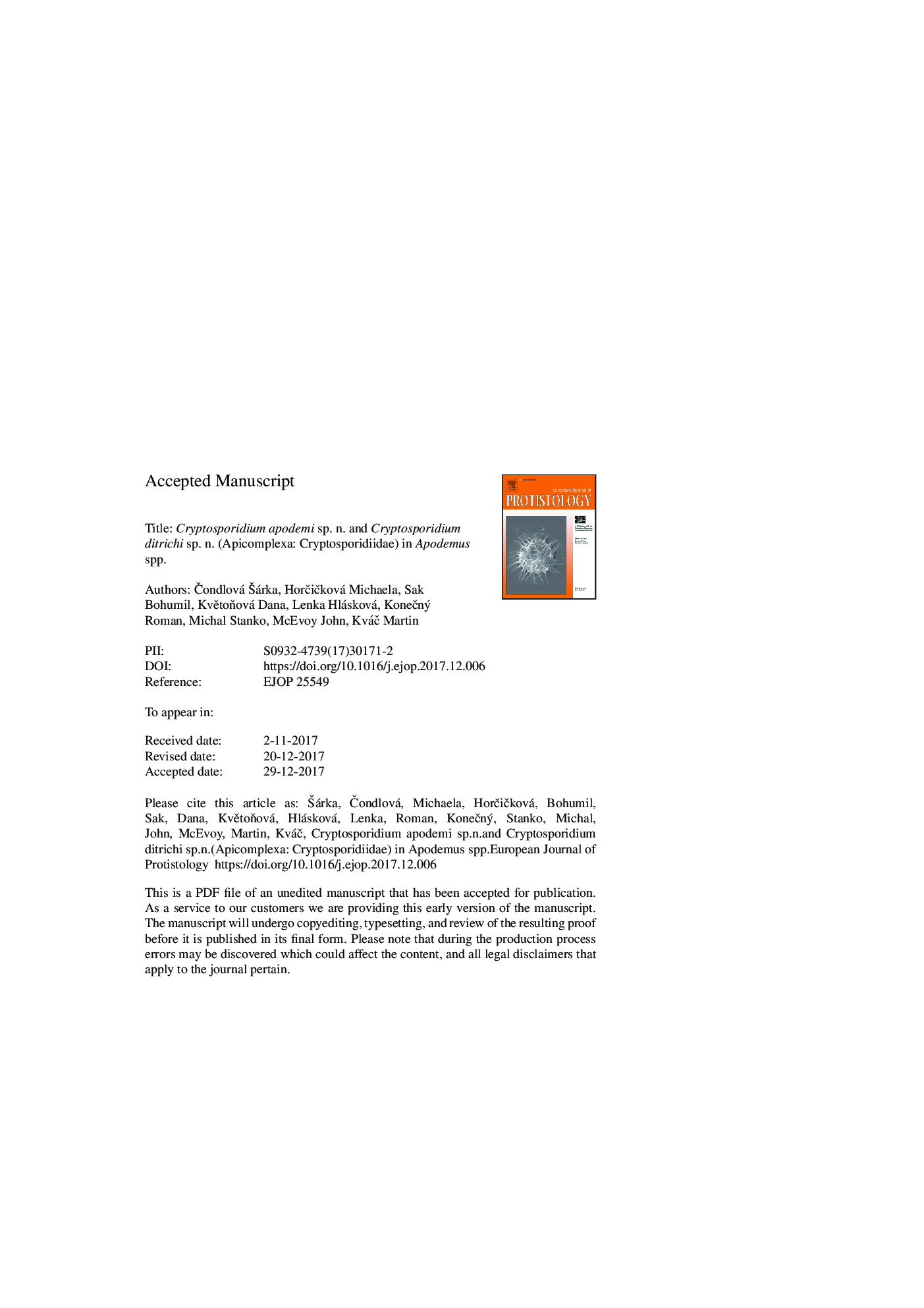| Article ID | Journal | Published Year | Pages | File Type |
|---|---|---|---|---|
| 8382468 | European Journal of Protistology | 2018 | 35 Pages |
Abstract
Faecal samples from striped field mice (nâ¯=â¯72) and yellow-necked mice (nâ¯=â¯246) were screened for Cryptosporidium by microscopy and PCR/sequencing. Phylogenetic analysis of small-subunit rRNA, Cryptosporidium oocyst wall protein and actin gene sequences revealed the presence of C. parvum, C. hominis, C. muris and two new species, C. apodemi and C. ditrichi. Oocysts of C. apodemi are smaller than C. ditrichi and both are experimentally infectious for yellow-necked mice but not for common voles. Additionally, infection by C. ditrichi was established in one of three BALB/c mice. The prepatent period was 7-9 and 5-6â¯days post infection for C. apodemi and C. ditrichi, respectively. The patent period was greater than 30â¯days for both species. Infection intensity of C. ditrichi ranged from 4000-50,000 oocyst per gram of faeces and developmental stages of C. ditrichi were detected in the jejunum and ileum. In contrast, neither oocysts nor endogenous developmental stages of C. apodemi were detected in faecal or tissue samples, although C. apodemi DNA was detected in contents from the small and large intestine. Morphological, genetic, and biological data support the establishment of C. apodemi and C. ditrichi as a separate species of the genus Cryptosporidium.
Related Topics
Life Sciences
Agricultural and Biological Sciences
Agricultural and Biological Sciences (General)
Authors
Å árka Äondlová, Michaela HorÄiÄková, Bohumil Sak, Dana KvÄtoÅová, Lenka Hlásková, Roman KoneÄný, Michal Stanko, John McEvoy, Martin KváÄ,
